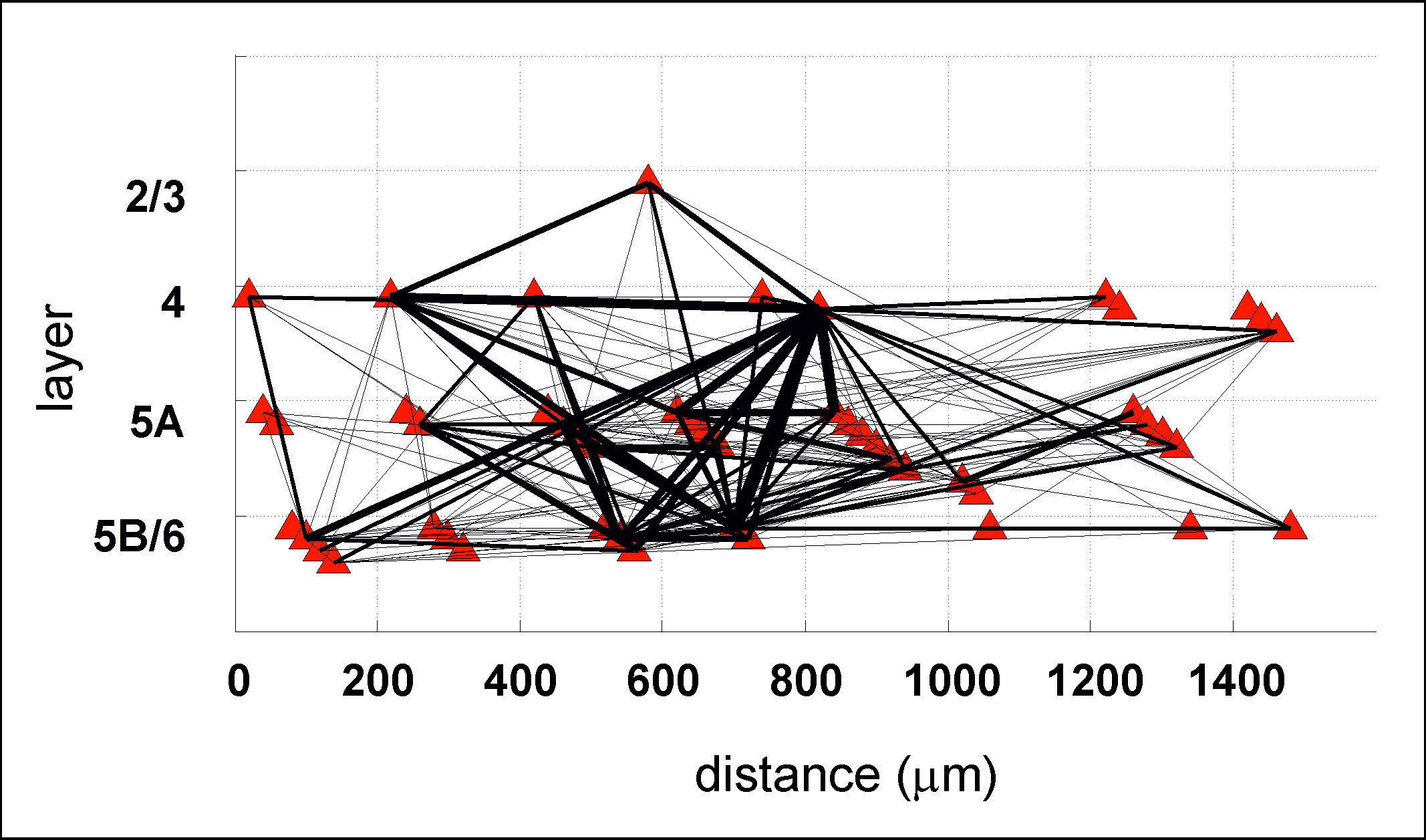Recent Project
Long-Range Intra-Laminar Noise Correlations in the Barrel Cortex
Vicente Reyes-Puerta, Yael Amitai, Jyh-Jang Sun, Itamar Shani, Heiko J. Luhmann, Maoz Shamir
Identifying the properties of correlations in the firing of neocortical neurons is central to our understanding of cortical information processing. It has been generally assumed, by virtue of the columnar organization of the neocortex, that the firing of neurons residing in a certain vertical domain is highly correlated. On the other hand, firing correlations between neurons steeply decline with horizontal distance. Technical difficulties in sampling neurons with sufficient spatial information have precluded the critical evaluation of these notions. We used 128-channel "silicon probes" to examine the spike-count noise correlations during spontaneous activity between multiple neurons with identified laminar position and over large horizontal distances in the anaesthetized rat barrel cortex. Eigen decomposition of correlation coefficient matrices revealed that the laminar position of a neuron is a significant determinant of these correlations, such that the fluctuations of layer 5B/6 neurons are in opposite direction to those of layers 5A and 4. Moreover, we found that within each experiment, the distribution of horizontal, intra-laminar spike-count correlation coefficients, up to a distance of ~1.5 mm, is practically identical to the distribution of vertical correlations. Taken together, these data reveal that the neuron's laminar position crucially affects its role in cortical processing. Moreover, our analyses reveal that this laminar effect extends over several functional columns. We propose that within the cortex, the influence of the horizontal elements exists in a dynamic balance with the influence of the vertical domain, and this balance is modulated with brain states to shape the network's behavior.
J. Neurophysiol. 2015
Diagram showing the spatial relation of correlated neuronal pairs in the rat barrel cortex, arranged according to their columnar and laminar location. Each neuron is represented by a red triangle, and their vertical and horizontal positions are slightly shifted to allow visibility. Connecting lines between neurons represent the top 20% coefficients. The thickness of the lines was determined by a linear function of the correlation coefficients.


